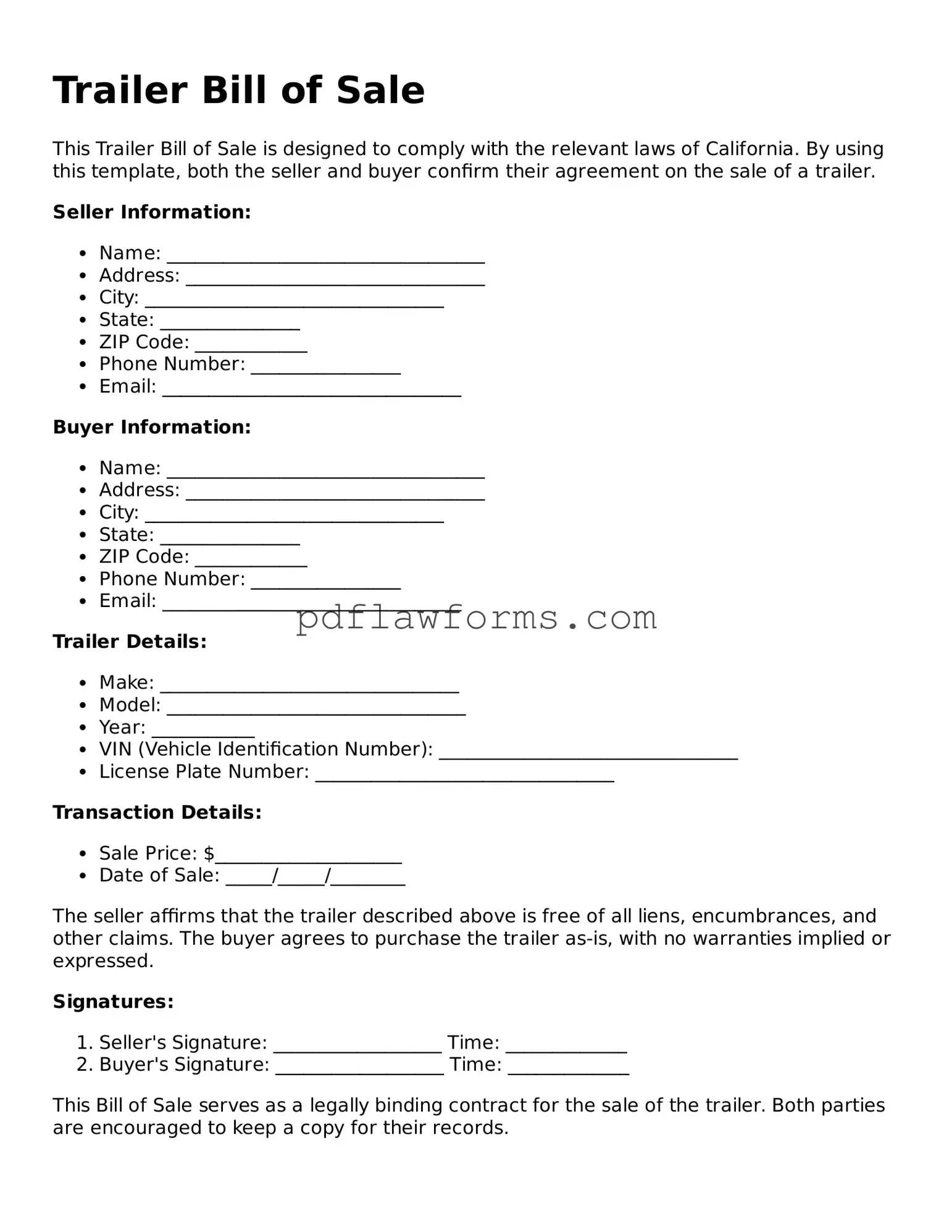Official Trailer Bill of Sale Form
The Trailer Bill of Sale is a legal document that serves as proof of the sale and transfer of ownership of a trailer from one party to another. This form outlines essential details such as the buyer's and seller's information, the trailer's description, and the sale price, ensuring both parties have a clear record of the transaction. To facilitate a smooth transfer, it is crucial to fill out this form accurately.
Start the process of transferring ownership by filling out the Trailer Bill of Sale form. Click the button below to get started!
Make My Document Online
